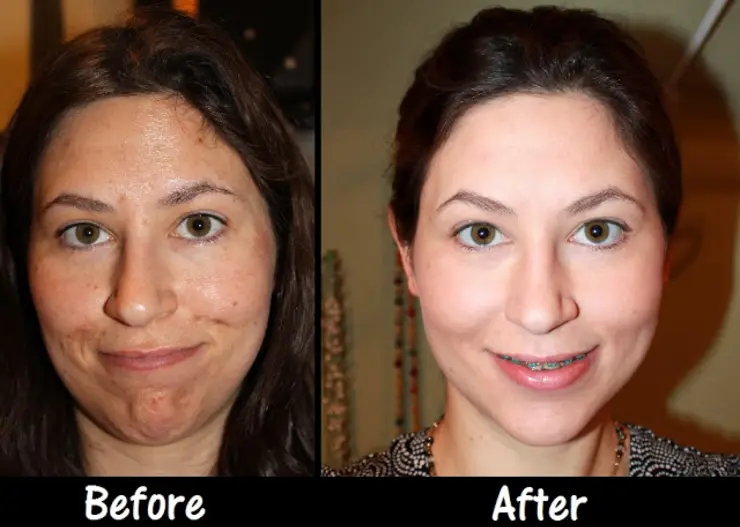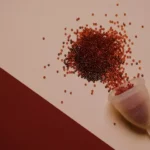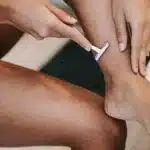What Is Chemical Peel?
Contents
Chemical Peel, also known as chemexfoliation or chemical exfoliation, is mainly used in the beauty industry to improve skin appearance.
It is a type of treatment, where a chemical substance is applied to the skin to remove dead skin, smooth, brighten skin, etc.
Dermatologists can treat other various skin conditions through chemical peel including:
- Pigmentary disorders
- acne vulgaris
- scars
- sun damages
- fewer wrinkles and lines
- more even skin color
- ages spots
- melasma
- rough-skin surface
- freckles
- dull-complexion
Check Out – Top 8 Tips: To Take Care of Your Skin Health

What Do Chemical Peels Do?
Now, we know that chemical peels are applied to our skin include, face, hands, and neck, to improve overall skin roll-call.
But chemical peels are also applied on other areas that must be treated, resulting in the skin exfoliating and eventually peeling off.
Once the process is done, the new skin underneath feels smooth, looks bright, is less wrinkled, and has less skin damage (2) (3)
Dermatologists and facial plastic surgeons also use a chemical peel to enhance appearance, either alone or in combination with other techniques (4)
How Many Types of Chemical Peels Are Available?
Chemical peels are commonly classified based on their depth of skin entry into superficial, medium, and deep peels.
Superficial peels: Known as a light chemical peel, which removes the outer layer of the skin, including stratum spinosum.
Where mild acids like alpha-hydroxy acid are used to exfoliate, resulting, in glowing skin, and treat acne, uneven fine tone, and dryness.
Medium peels: It removes skin cells from the papillary dermis (a thin top layer of the dermis) to the upper reticular dermis (a thick bottom layer of the dermis).
Studies show that females with fair skin, and blue eyes are perfect for medium and deep chemical peeling.
Usually, it treats wrinkles, acne, scars, and uneven skin tone, and you may need to repeat this procedure to maintain the same result.
Deep peels: The primary difference is that deep peel removes the skin’s deeper layer, which is the mid-reticular dermis (5)
Phenol is an aromatic compound, (a powerful chemical) and, dermatologists mix it with other vital ingredients to work properly.
How Chemical Peeling Is Done?
Chemical peels are done by dermatologists, where cleaning patients’ faces with alcohol-based remover also remove makeup.
A hair cap is used or ties your hair back, then cover your eyes with protective goggles or with other shields.
Generally, anesthesia is not required, but it may be considered in deep peels (6)
Then, the doctor applies a jelly to the soft areas (which have more chance of effects) such as nasolabial folds, and lateral canthi (under the eyes).
Now, the chemical peeling agent is applied to the different skin portions, Specialists also use brushes, and wooden spatial to distribute stoke equally.
After peeling the application, cool saline compresses can be applied to neutralize the solution and provide comfort.
And after 24 hours, the patients may take shower, use a non-detergent face wash, and use sunscreen before going outside (6)
Make sure, do not to use any makeup until the skin has healed.
Risks, and Side Effects of Chemical Peels
Chemical peeling has some common side effects which are temporary including:
- Redness
- burning sensation
- light swelling
- dryness
Apart from side effects, it also has serious risks, that can be permanent.
However, certain patients are more prone to complications, including darker skin, which even leads to permanent scar formation.
Its complications may be seen immediately or days or weeks later which include:
Immediate serious risks such as-
- Edema
- burning or itching sensations
- blisters
- anaphylactic (in this immune system releases a chemical flood that can cause you into a shock)
- irregular heartbeat
- nausea
- shortness of breath a rare complication
Liver kidney damage – The phenol used in peeling can actually the heart muscle, liver, and kidneys.
That is why kidney and liver function should be tested before phenol peeling which reduces the chance of toxicity (7)
Delayed complications include:
- Bacterial, viral, and fungal infection
- scarring
- skin picking
- may see aggressive peeling in the thin-skinned areas such as the neck
- sun exposure patients are more prone to inflammation hyperpigmentation (8)
Before and After

How Much Will It Cost?
A chemical peel is considered a beauty or cosmetic procedure (9)
According to AAD (American Academy of dermotologist), Insurance does not cover the cost of cosmetic treatments.
If you talk about its price in India, the chemical peel price depends on what type of feeling are you using like:
- For light peeling it will cost around 1,000 to 5,000 Rs
- medium peeling will come around between 3,000 to 7,000 Rs
- deep may come between 5,000 to 9,000 Rs.
However, there are several types of chemical peels which is budget-friendly, like glycolic acid, and salicylic acid, which are not that expensive.
Make sure, chemical peels will only be applied by a professional dermatologist because it reduces the chance of serious complications.
Who Should Avoid Chemical Peel?
There are several people, who should avoid chemical peeling which include:
- History of allergic reaction to peeling chemicals or certain chemical agents
- open wound on the peel area, or infection
- pregnant and breastfeeding women
- use isotretinoin medicine (treat severe cystic acne) for the last 6 months, especially to medium and deep peel
- uncontrolled diabetes
- Psoriasis (a skin disease that causes rashes, itchy) patients should avoid
- exposure to radiation therapy such as in cancer in recent times (10)
- connective tissue diseases like arthritis, lupus, an autoimmune condition, etc
- atopic dermatitis person (a skin condition that causes itchy, inflamed, and dryness commonly seen in young children)
- people who have poor wound healing or weak immune system
- Patients with dyschromia (an irregular skin discoloration)
Can I Do Chemical Peeling? – At Home
Yes, you can do chemical peeling at home, but the home-based chemical peel does not give the same result, as professional peeling.
Home-care peels are very mild, chemical are very low concentrated so that you can use them safely.
On another hand, a professional chemical peel is highly concentrated, and also gives better results (11)
Because doing it the right is what makes it stand out from home with fewer side effects, complications, and fewer skin issues.
Are Chemical Peels Safe? and How Long Do It Last?
Yes, is completely safe, however, doing it the right way, and under the supervision of professionals increases the chance of safety.
Usually, a superficial peeling produces last between 1 to 2 months, however, a medium peel result will last for months.
In deep peeling, you may see its result for months to months
How Often Can You Get a Chemical Peel?
There are several research, show that how often you can get chemical peeling. it depends on which peeling you have done.
Light and medium peeling can be done once a month, however, professionals suggest this peeling should only be done 2 to 3 times a year.
Deep peeling means – where deep skin layers are cleaned, which also requires healing time, so you should only do it 1 to 2 times a year.
If you have any skin issues, then you should consult the doctor first, which may suggest other types of skin cleaning ways.
Down Line
Chemical Peel, also known as chemexfoliation, where specialists used acid to remove the skin to enhance appearance.
The acid used by professionals is highly concentrated, and doing it the right is what makes it stand out from home use.




